60" range - Wolf vs Capital Culinarian
drw4013
8 years ago
Featured Answer
Sort by:Oldest
Comments (76)
wekick
8 years agoTrevor Lawson (Eurostoves Inc)
8 years agoRelated Discussions
awwwg capital culinarian... now a wolf df??
Comments (8)I am going to give you my experience recently. I built a house 10 months ago and my dream of that wolf dual fuel was huge. Long before teh culinarian came out. Built my kitchen around that gorgeous wolf. First, my disappointment started when it would take me 40+ minutes to warm up my ovens (even the small one) to anywhere near 400 degrees. Racks were also hard to pull out. Then came the very uneven cooking on using convection and cooking on more than one rack. I called wolf. Sent a guy who stuck a thermometer in the oven to check temp. Told me it was fine. Next comes a chef. I was impressed on that and she baked cookies. Too bad that it was only on one rack. They were fine. Then she came back and it was multi racks. She says it is fine, I say not. It was obvious the cookies on the bottom much darker than the ones on the top. As a matter of fact a couple on the top rack were still very undercooked as she scratched her head and blew that off. She told me she would have the factory check why this happened, but then I would never hear back from her. I swear it was the convection system, the fans, something. They never took a thing apart. Griddle hard to clean. They did a buy back. Thank goodness! Ordered my new culinarian. It had an issue at delivery, so they are making me a new one. Company immediatly brought me a precision while I wait. Similar ovens at least to culinarian. A pleasure to cook with. Their griddle very easy to clean. I am giving you my experience because it was my dream, but I feel it was all in the name for me. No more of that. I need a cooking machine. Took 20 min to boil water on that wolf....See More36' Capital Precision vs. Culinarian series range?
Comments (7)Are you sure the downdraft you're considering will really work behind a range? Most telescoping downdrafts only work with cooktops. The only telecscoping downdraft I'm aware of that works with a range is Dacor and it only works with their range. In any case, a downdraft is most likely not going to be adequate with the ranges you're considering. You really need to go with an island hood and not mount it too high - there are some hoods that are less obtrusive than others. Can you take the range out of the island and put it on a wall? That's generally a better location an will give you better venting options....See MorePro Range (Viking vs. Capital Culinarian)
Comments (24)I know I am a little late joining this conversation, but I found this thread, looking up a comparison between Viking and Capitol. These are my two finalists, but things have changed a lot with these 2 companies in the past 2 years, since the last comments were made. First of all, Viking, who was purchased by Middleby Corporation (approx. 3 years ago), has made significant changes to the entire product line at Viking. I am in the commercial kitchen equipment business, and Middleby Corp owns the finest cooking equipment companies in the commercial cooking business (Jade Range, Southbend Range, Wells Mfg., Lang Mfg., Pitco, Blodgett, Market Forge, TurboChef, Star Mfg., Magic Kitchen, Anets, Toastmaster, Nu Vu, Doyon, and more). I went to the big home show this past spring in Las Vegas, and spoke directly with the CEO of Middleby and asked him what he has done with the Viking line since he bought the company. He hired engineers to revamp everything in the line, and was very proud of his new 7 series ranges with their new burner design and chrome plated griddles. He let me know that he inherited a lot of service issues that he has addressed, both on the manufacturing side, and on the customer service side. I can tell you that working with their commercial division companies, they are very committed to customer satisfaction, and expedited service. Some of Middleby's commercial divisions are making components and ovens for their newer product additions (such as TurboChef ovens in their wall ovens). I can't tell you how these changes have impacted the lastest product offerings, but I can't imagine that the changes have made them worse. I did have a Viking 48" gas range in a house I sold back in 2008, circa 2004, and there were a lot of features I did not like. Burners were not good in simmer mode, gas oven was not self cleaning, and was very difficult to get clean. Charbroiler smoked out the house, whenever I tried to use it. But it added a lot of value to the house when I sold it. Now let's look at Capitol. The guy who owns Capitol, owned DCS, which used to be one of the "players" in the commercial range market. Their ranges were very attractive, performed well, but were not heavy duty enough for high volume restaurants (Wolf and US Range were the big players on the West Coast, where DCS and now Capitol are located.) As many companies have gone light weight, easy to clean, low maintenance, Capitol appears to be sticking with some of the old commercial designs, which pay off from a performance standpoint, but may intimidate some, from a maintenance standpoint. I am truly impressed with the open burners on the Capitol Connoisseurian and Culinarian ranges. I can tell you that not only the burner design, but the top grate design adds significantly to the performance of the burners. Their is a bowl/ring that is part of the cast iron grates that directs the heat back up onto the pans that is deflected down off the the bottom of the pan, containing the area. The open style grates, that are light weight and easy to clean, have no added qualities to the performance. I am impressed with the thermostatic griddle (which is also standard on the Viking). The old manual flame griddles got too hot and made them useless for breakfast items, and left the griddle only for meat and searing. The addition of a self cleaning oven on the all gas model is probably the biggest "plus" feature of the range comparing it to Viking. With Viking you have to go to Dual Fuel, which raises to price by a couple thousand dollars. To me, the downside of both of these ranges is that they don't have a real good computer control for the ovens, like you see in a regular domestic range. I would love some feedback from anyone who has bought these two products in the past 6 months or so, with the latest improvements, and the bugs worked out....See MoreThermador Pro Grand Steam 48 vs Capital Culinarian 48
Comments (10)Posted by trevorlawson I think its fair to say that the CC will out cook a thermadore due to open burners. Fair to say based on what? Please describe what this means. The high end is 22K BTUs-pretty close to Capital. This is the rating for the heat output, nothing to do with open or closed. The low end is 375 BTUs. We don't know what Capital has for that. I am sure everyone knows what I sell. What I sell does not detract from the fact that open burners outperform sealed burners. The difference between open and sealed burners is significant nothing nominal about it. We tested a wolf range with caps on and caps off using same pan same water side by side at the same time, the burner with caps off boiled water over 23% fast..... that is significant Here is the video. Outperform would be a mischaracterization of this "test". I see performance as more multidimensional than putting the most heat in the center of a pan. If you had a wider pan, or changed the metal it was made of, or what you are cooking, your results would be different. This falls under the category of showmanship rather than anything scientific. How can you say this-"the burner with caps off boiled water over 23% fast."without any supporting data? You are right it is not how big the burners are but how the burner delivers heat to the CENTER of the pan, so the base of the pan gets evenly hot. Sealed burner send vast majority of the heat to the outside of the pan, open burners send the heat to the center of the pan. Please explain using the principals of heat transfer how delivering heat to the center of a pan is allowing the base of the pan to get evenly hot. If you have a ring of heat on the bottom of the pan, heat will travel in both directions from that ring to heat the pan. The center will receive heat from more directions and heat quicker, until it comes to equilibrium, than the outside so it is optimum to have a ring with the maximum heat more towards the outside of the pan than the inside. It is much harder to get heat to the part of the pan outside of the ring. A sealed ring burner flame pattern is only slightly wider than an open ring burner, a little more if you have it wide open. If you use a pan with reasonably good heat transfer like copper or aluminum, the burner shape doesn't really matter as much, but I wouldn't want the heat in the middle of the pan. The only way I would see heat in the middle of a pan as a benefit is if I were using a very small pan or a wok. I use everything from a 7 inch pan to make caramel with no stirring to a 14 inch aluminum pan on my sealed burners. For any pan less than 7 inches, I have a "small pan burner" I can make fried potatoes in that 14 inch pan with even color all the way across. I use cast iron if I need a lot of heat as in searing meat....See MoreRuss Barnard
8 years agoTrevor Lawson (Eurostoves Inc)
8 years agoTrevor Lawson (Eurostoves Inc)
8 years agohvtech42
8 years agolast modified: 8 years agohvtech42
8 years agolast modified: 8 years agoRuss Barnard
8 years agowekick
8 years agohvtech42
8 years agolast modified: 8 years agohvtech42
8 years agolast modified: 8 years agoRuss Barnard
8 years agolast modified: 8 years agowekick
8 years agoplllog
8 years agoRuss Barnard
8 years agoCapital Cooking Equipment Inc
8 years agoRuss Barnard
8 years agowekick
8 years agolast modified: 8 years agoCapital Cooking Equipment Inc
8 years agohvtech42
8 years agolast modified: 8 years agoCapital Cooking Equipment Inc
8 years agohvtech42
8 years agolast modified: 8 years agoRuss Barnard
8 years ago59 Dodge
8 years agowekick
8 years agoplllog
8 years agoRuss Barnard
8 years agohvtech42
8 years agolast modified: 8 years agowekick
8 years agoCapital Cooking Equipment Inc
8 years agoCapital Cooking Equipment Inc
8 years agoAdam
8 years agoRuss Barnard
8 years agoeshmh
8 years agolast modified: 8 years agoCapital Cooking Equipment Inc
8 years agoplllog
8 years agolast modified: 8 years agowekick
8 years agolast modified: 8 years agoRuss Barnard
8 years agowekick
8 years agolast modified: 8 years agohvtech42
8 years agoRuss Barnard
8 years ago03_Aggie
8 years agoplllog
8 years agolast modified: 8 years agoCapital Cooking Equipment Inc
8 years agoTrevor Lawson (Eurostoves Inc)
8 years agolast modified: 8 years agoRuss Barnard
8 years agoTrevor Lawson (Eurostoves Inc)
8 years agoRuss Barnard
8 years agoplllog
8 years agolast modified: 8 years agowekick
8 years ago
Related Stories
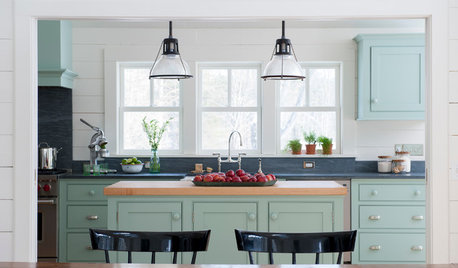
KITCHEN OF THE WEEKKitchen of the Week: Casual Farmhouse Looks, Pro-Style Amenities
Appliances worthy of a trained chef meet laid-back country charm in a Connecticut kitchen and pantry
Full Story
KITCHEN DESIGNA Cook’s 6 Tips for Buying Kitchen Appliances
An avid home chef answers tricky questions about choosing the right oven, stovetop, vent hood and more
Full Story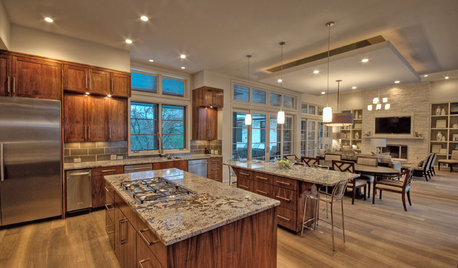
KITCHEN DESIGN7 Strategies for a Well-Designed Kitchen
Get a kitchen that fits your lifestyle and your design tastes with these guidelines from an architect
Full Story
KITCHEN DESIGNHouzz Call: Pros, Show Us Your Latest Kitchen!
Tiny, spacious, modern, vintage ... whatever kitchen designs you've worked on lately, we'd like to see
Full Story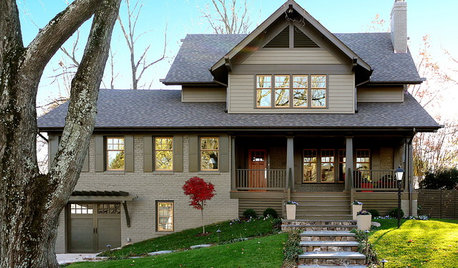
REMODELING GUIDESHouzz Tour: Turning a ’50s Ranch Into a Craftsman Bungalow
With a new second story and remodeled rooms, this Maryland home has plenty of space for family and friends
Full Story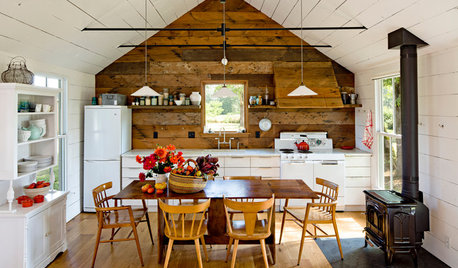
KITCHEN DESIGNA Single-Wall Kitchen May Be the Single Best Choice
Are your kitchen walls just getting in the way? See how these one-wall kitchens boost efficiency, share light and look amazing
Full Story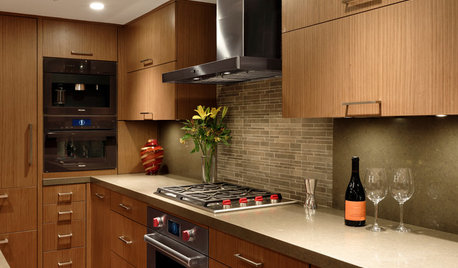
SMALL KITCHENSThe 100-Square-Foot Kitchen: Fully Loaded, No Clutter
This compact condo kitchen fits in modern appliances, a walk-in pantry, and plenty of storage and countertop space
Full Story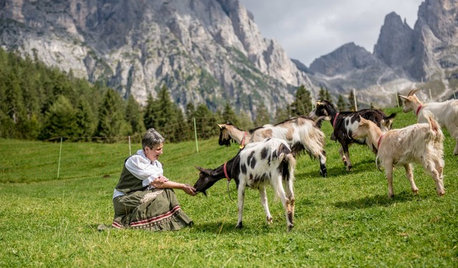
FARMHOUSESWorld of Design: See How 9 Families Live and Farm on Their Land
Join us as we visit the homes and farms of passionate food producers and hear about rural life around the globe
Full Story




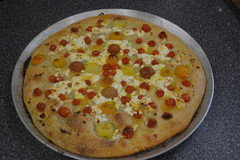






59 Dodge